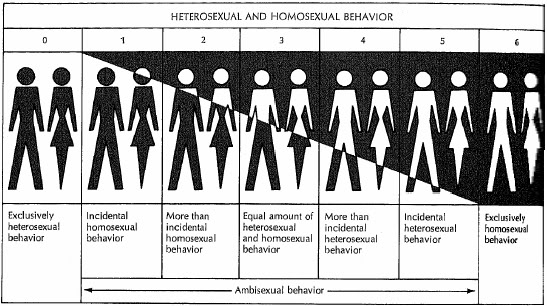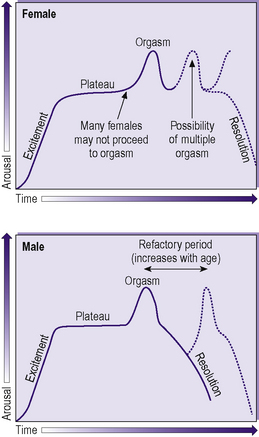Introduction
Human sexuality is a complex interplay of biological, psychological, and social factors. Unlike many other species, mechanism of sex of human sexual motivation extends beyond mere reproduction and is deeply embedded in emotional intimacy, social bonding, and individual identity.
Read More- Hunger Motivation
Human Sexual Motivation
As in most primates, human males remain continuously potent and fertile throughout adulthood. However, human females differ from most mammals in a number of important ways. Unlike other species, human females lack a clearly defined estrus cycle—a period of heightened sexual interest tied to fertility. Instead, women demonstrate a greater capacity for experiencing orgasms and maintain sexual receptivity across the menstrual cycle (Buck, 1976, p. 238).
It is believed that evolutionary pressures have shaped human sexuality to support more than reproduction. For example, physical and behavioral expressions such as make-up, clothing, and accessories can act as signals of sexual availability or attractiveness. These culturally influenced behaviors reflect a broader and more complex mechanism of sexual motivation than seen in non-human mammals.
According to Desmond Morris (as cited in Buck, 1976), the capacity for orgasm in human females, along with the emotional intimacy associated with sexual activity, may serve to reinforce pair bonding—a crucial adaptive trait in human social structures.
Reproductive Success and Motivation
Reproductive success can be achieved in two ways:
- Directly: through producing offspring.
- Indirectly: by supporting and nurturing existing offspring, thereby enhancing their survival and reproduction.
While direct reproduction does not impose a significant cost on males, females invest more heavily, both biologically and emotionally. Thus, women are often motivated to seek stability—economic and emotional—as part of mate selection (Buck, 1976, p. 242).
Prenatal Development of Sexual Organs
Prenatal sexual differentiation is a biologically guided process that determines the development of male or female reproductive anatomy. This differentiation begins in the early embryonic stage and is influenced by both genetic and hormonal factors.

Fetal Development
1. Bipotential Stage- In the early weeks of gestation, all embryos possess bipotential gonads, Wolffian ducts (precursors to male internal organs), and Müllerian ducts (precursors to female internal organs). These structures are sexually undifferentiated, meaning they have the potential to develop into either male or female reproductive systems.
2. Genetic Sex Determination- Determined at conception:
- XY chromosomes lead to male development.
- XX chromosomes lead to female development.
3. Role of the SRY Gene- Located on the Y chromosome. Triggers development of testes in XY embryos around week 6–7. Testes begin producing testosterone and Müllerian Inhibiting Substance (MIS).
4. Hormonal Influence on Organ Development
- In Males (XY)- Testosterone promotes the development of Wolffian ducts into:
- Epididymis
- Vas deferens
- Seminal vesicles
MIS causes regression of the Müllerian ducts, preventing female organ development. External genitalia develop under the influence of dihydrotestosterone (DHT), derived from testosterone.
- In Females (XX)- Absence of SRY gene allows gonads to develop into ovaries. No significant secretion of testosterone or MIS. Wolffian ducts degenerate. Müllerian ducts develop into:
- Fallopian tubes
- Uterus
- Upper portion of the vagina
- In Males (XY)- Testosterone promotes the development of Wolffian ducts into:
5. Brain and Behavioral Organization- Prenatal hormone exposure, especially testosterone, also influences the development of brain structures associated with sexual behavior. These organizational effects are long-lasting and help shape gender-typical behaviors later in life (Buck, 1976, pp. 243–244).
Early Research on Sexual Behavior
Two important early researches include-
1. Kinsey Reports
One of the first comprehensive investigations into human sexual behavior was conducted by Alfred Kinsey and his team in 1938. They gathered data from over 5,300 men and 5,940 women, challenging many social taboos and providing foundational insights into the diversity of human sexual behavior (Buck, 1976, p. 234).

Kinsey Scale
2. Masters and Johnson
William H. Masters and Virginia E. Johnson later conducted laboratory studies on human sexual response. Their work identified a four-phase sexual response cycle, which remains a cornerstone in the understanding of human sexuality.
The Human Sexual Response Cycle
The four phases include-

Sexual Response Cycle
- Excitement Phase- Sexual arousal begins in response to a range of stimuli—tactile, visual, auditory, olfactory, or imaginary.
- Plateau Phase- Arousal intensifies. Sensitivity to nonsexual stimuli decreases, and physical responses heighten.
- Orgasmic Phase- In males, the orgasm is consistent in intensity and duration. In females, there is wide variability both within and between individuals (Buck, 1976, p. 236).
- Resolution Phase- Males experience a refractory period in which further arousal is not possible. Females may experience multiple orgasms if stimulation continues. The resolution is gradual and variable (Buck, 1976, p. 236–237).
Gender Differences in Sexual Arousability
Research indicates that males generally show higher sexual arousability than females. Multiple explanations have been proposed:
- Conditioning Capacity (Kinsey): Males are more easily conditioned to associate various stimuli with arousal.
- Biological Drive: Higher levels of androgens (e.g., testosterone) in males may account for greater spontaneous arousal.
- Learning and Experience:
- Males often engage more in masturbation and sexual fantasy, leading to broader conditioning.
- Females, influenced by social norms, may experience delayed sexual exploration, limiting their arousal pathways early on (Buck, 1976, p. 239–241).
Physiological Determinants of Sexual Arousal
Some of the physiological determinants of sexual arousal include-
Hormonal Mechanisms
Sex hormones influence sexual arousal in two ways:

Organizational and Activational Effects of Steroid Hormones
- Activation Effects: Hormones activate existing sexual behavior systems.
- Organizational Effects: Hormones shape the development of sexual systems early in life.
In mammals, estrus is regulated by ovarian hormones. Removal of ovaries reduces sexual receptivity, which can be restored with hormone replacement. However, in humans, the link is less direct. Some postmenopausal or ovariectomized women maintain sexual interest, suggesting that androgens from the adrenal glands may play a key role in female desire (Buck, 1976, p. 244).
- Female cancer patients with pituitary damage experienced reduced sexual interest, which improved after androgen therapy.
In males, testosterone directly correlates with sexual activity; castration reduces sexual behavior, but prior sexual experience moderates this loss (Buck, 1976, p. 245).
Organizational Effects
- These occur prenatally or perinatally and influence long-term sexual behavior.
- Effects are relatively permanent, although later experiences can modify outcomes.
- Sex differences arise from X and Y chromosomes, which direct the hormonal organization of tissue toward male or female pathways (Buck, 1976, p. 243–244).
Neural Mechanisms in Sexual Behavior
The spinal cord controls many reflexive aspects of sexual response. Spinal injury does not prevent sexual arousal or behaviors, but damage to the hypothalamus or limbic system can significantly impair copulatory behavior, especially in males (Buck, 1976, p. 246).
This difference suggests that cortical structures are more critical in male sexual behavior, while hormonal influences dominate female sexuality.
Hormone–Neural Interaction
Studies show that prenatal hormone exposure determines later sexual behavior. For example, female rats injected with testosterone during critical periods fail to show normal female sexual behavior, even when given estrogen later in life. Similarly, testosterone can masculinize human brain structures, influencing future orientation and identity (Buck, 1976, p. 247).
Developmental-Interactionist Perspective
While biological factors are foundational, human sexual behavior is strongly shaped by social learning. Gender identity, sexual orientation, and arousability develop through an interplay of hormonal, neural, and environmental influences (Buck, 1976, p. 248).
Thus, unlike animals, human sexuality is not biologically fixed, but malleable and responsive to upbringing, culture, and personal experiences.
References
Buck, R. (1976). Human Motivation and Emotion. New York: Wiley.
Kinsey, A. C., Pomeroy, W. B., & Martin, C. E. (1948). Sexual Behavior in the Human Male. Philadelphia: W.B. Saunders.
Masters, W. H., & Johnson, V. E. (1966). Human Sexual Response. Boston: Little, Brown and Company.
Morris, D. (1967). The Naked Ape: A Zoologist’s Study of the Human Animal. London: Jonathan Cape.
Subscribe to Careershodh
Get the latest updates and insights.
Join 16,438 other subscribers!
Niwlikar, B. A. (2019, April 18). Mechanism of Sex and 4 Important Stages of Sexual Response Cycle. Careershodh. https://www.careershodh.com/mechanism-of-sex/
